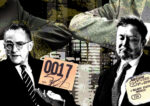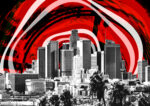Troubled loans tied to office buildings across the U.S. are on the rise, with commercial borrowers in Chicago, Denver, Philadelphia and San Francisco among the hardest hit.
The rate of delinquent or specially serviced commercial mortgage-backed securities 2.0 loans rose to 6.8 percent in August, up from 4.5 percent in June last year, the Silicon Valley Business Journal reported, citing figures from Kroll Bond Rating Agency.
More properties face foreclosure as landlords struggle to fill vacant offices, while refinancing office towers becomes a tougher challenge.
CMBS 2.0 conduit loans made after the Great Recession make up $600 billion in commercial real estate debt, or 13 percent of the $4.5 trillion commercial real estate debt market. The national office distress rate was 8 percent.
Of the nation’s top 20 markets, the distress rate of commercial mortgage-backed security loans last month was 7.2 percent, according to KBRA, after rising in 15 cities.
Chicago tops the list for troubled loans at 22.7 percent, followed by Denver at 19.1 percent, Philadelphia at 14.2 percent and San Francisco, where a third of its offices are empty, at 13.9 percent.
The rate of distressed commercial debt was nearly 14 percent in Houston, more than 7 percent in New York, and approaching 6 percent in Los Angeles and nearby Riverside, according to a KBRA chart.
A smaller number of loans backing large office properties has generally driven distress rates higher in major markets, Roy Chun, senior managing director and head of CMBS surveillance at KBRA, told the Business Journal
But he said some markets show an increase in distressed loans because of other properties. In Houston, for instance, the hotel delinquency rate hit 56.1 percent.
Read more



The overall delinquency rate peaked at 10.2 in 2012 after the Great Recession, with office properties peaking at 10.5 percent during that period. Delinquent apartment or condominiums peaked at 15.4 percent, according to KBRA data.
During the peak of the 9 pandemic, the overall delinquency rate was 9.8 percent, with lodging reaching 23 percent. The distress rate among hotel properties has since fallen to 7.2 percent.
— Dana Bartholomew
